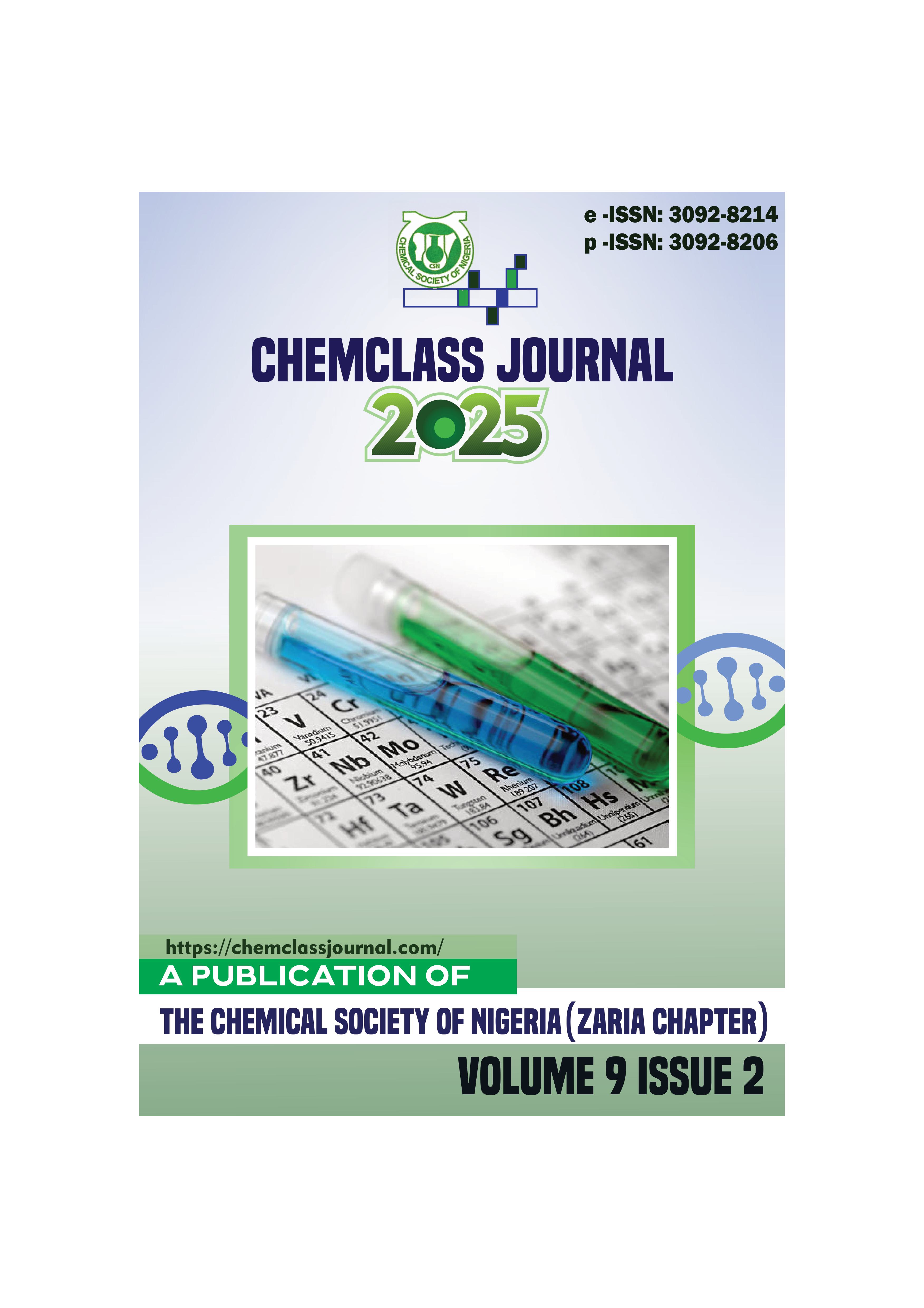Physicochemical Characteristics of Gully Impacted Soils in Southeast Nigeria
DOI:
https://doi.org/10.33003/chemclas-2025-0902/170Keywords:
Gully erosion, Southeast Nigeria, Porosity, Organic matter, cation exchange capacity, soil conservationAbstract
Gully erosion is a critical environmental concern in Southeast Nigeria, causing extensive land degradation,
loss of arable soil, and disruption of socio-economic activities. This study investigates the physicochemical
characteristics of gully-impacted soils across three states—Imo, Abia, and Anambra—representing the
Southeast geopolitical zone, with soils from Rivers State serving as a control. The research aimed to identify
key soil properties that influence erosion susceptibility and to inform effective mitigation strategies. Soil
samples were analyzed for pH, bulk density, porosity, moisture content, organic carbon, organic matter,
cation exchange capacity (CEC), and exchangeable bases. Results reveal that most gully-affected soils were
acidic (pH 0.62–6.08), compared to the near-neutral control (pH 7.15), indicating a potential role of acidity
in soil structure breakdown. Bulk densities of affected soils (0.853–1.479 g/cm³) were lower than the control
(1.624 g/cm³), while porosity values (44.32–67.82%) were significantly higher, suggesting increased pore
space that may weaken soil cohesion and promote erosion. Organic carbon (0.09–3.02%) and organic matter
(0.10–5.21%) levels were variable, with several samples falling below control levels, potentially limiting
structural stability. Moisture content ranged widely (0.22–11.26%), indicating inconsistent water retention
capacity. Exchangeable calcium and magnesium were generally lower in the affected soils, while sodium
was higher—conditions unfavorable to aggregate stability. Most samples also exhibited reduced CEC
compared to the control (29.78 meq/100g), indicating lower nutrient-holding capacity. Texturally, soils
were predominantly sandy and loamy sand, with minimal clay content, further exacerbating erodibility.
The study concludes that the interplay of low pH, high porosity, low nutrient retention, and poor structural
integrity contribute significantly to gully formation. Therefore, integrated soil management practice is
recommended, such as liming, organic amendments, and targeted fertilization—to enhance soil stability
and combat erosion in the region.





 ChemClass Journal
ChemClass Journal
